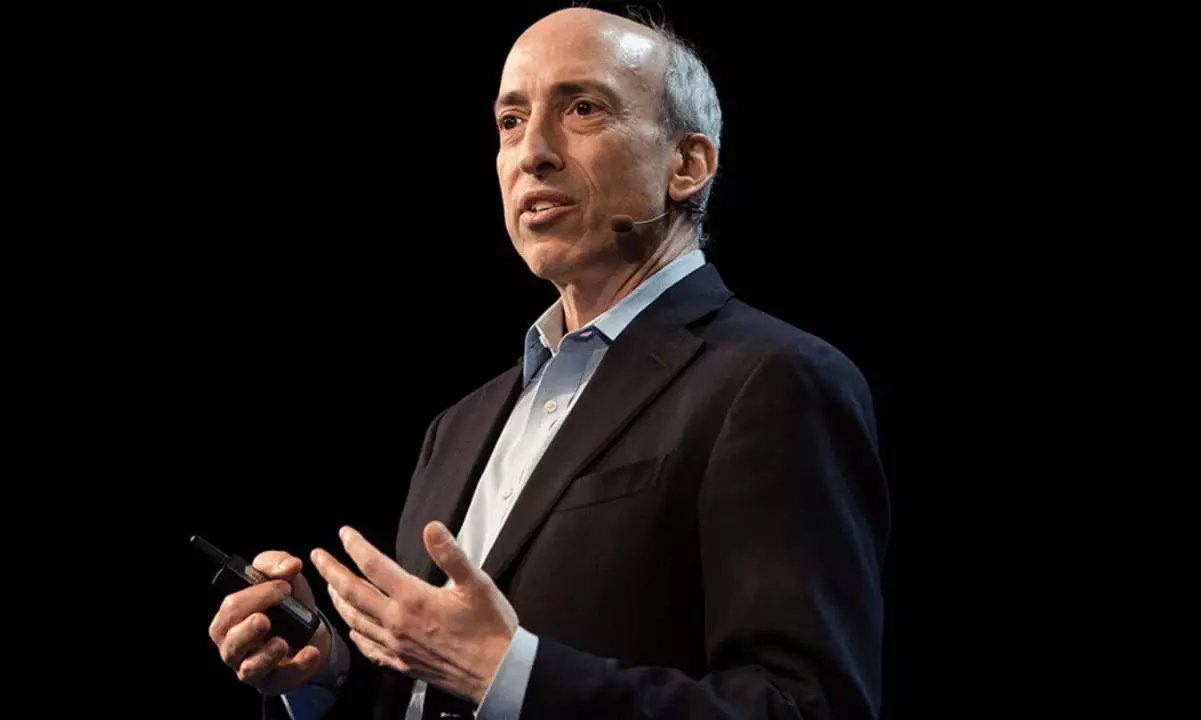The crypto landscape is an ever-shifting and tumultuous environment, one that perpetually balances on the precarious edge of speculation and intrinsic value. Gary Gensler, the former chair of the Securities and Exchange Commission (SEC), has recently re-emphasized this precariousness, presenting an alarming portrayal of digital assets that ought to resonate with both investors and policymakers. His assertion that the crypto market is predominately driven by emotions over fundamentals should raise red flags for anyone navigating these choppy waters.
The Specter of Sentiment-Driven Markets
At the heart of Gensler’s argument is the undeniable influence of market sentiment on the value of cryptocurrencies. He boldly states that an overwhelming 99% of digital assets are influenced by emotional investors rather than grounded financial principles. This inherently volatile nature suggests that many altcoins could disappear overnight, leaving investors with little more than digital dust. It echoes a larger concern regarding the sustainability of an industry that treats tokens like ephemeral memes rather than tangible investments.
In many respects, this sentiment-driven volatility mirrors the exuberance and subsequent despair seen in traditional markets during economic bubbles. Investors gravitate toward the next trending token or digital collection based more on hype than on the project’s underlying fundamentals. This irrational exuberance is not just a quirk of crypto; it’s a reflection of human psychology—a mix of hope, fear, and the prospect of quick riches. Yet Gensler’s cautionary tone serves as a reminder that real financial acumen involves discerning valuable assets from gimmicks.
Bitcoin’s Resilient but Isolated Position
However, amidst this chaos, Gensler distinguishes Bitcoin as an outlier among the myriad of digital assets. His view on Bitcoin as a potential analog to gold is not unfounded; both represent a store of value that has garnered global attention. Bitcoin may indeed withstand the test of time, bolstered by the interest of over 7 billion people. His insight that “many people will not have a fascination with ten or fifteen thousand memes” is spot-on. The majority of altcoins may fade into obscurity as the market matures, but Bitcoin appears more likely to thrive due to its widespread recognition and established infrastructure.
In discussing Bitcoin’s staying power, Gensler almost inadvertently underscores the importance of foundational principles in investing—pointing out that value comes from user engagement and utility, not just social media attention. The gleam of Bitcoin’s promise continues to shine amidst the rubble of countless digital tokens, perhaps signaling that a mature market may ultimately recognize this divide.
Tariffs, Economic Policy, and Market Volatility
Stepping beyond the confines of cryptocurrencies, Gensler also delves into broader economic issues, particularly U.S.-China tariff relations. His reference to the ongoing trade tensions as a “quagmire” indicates a growing concern that convoluted policies are eroding investor confidence. The interrelationship between global markets and domestic financial policy cannot be overstated; when uncertainty prevails, chaos ensues.
With digital assets experiencing significant outflows—nearly $800 million in a single week—it’s clear that investors are responding to this instability with caution. Gensler’s reflection on his engagements with Chinese officials serves as a reminder that clear, consistent, and respectful dialog is crucial to navigating today’s complex economic landscape. The implications for crypto and traditional finance are profound; unpredictable government actions can induce panic, making it imperative for institutions and investors alike to remain vigilant.
The Dawn of AI in Finance
Additionally, Gensler’s shift to focus on artificial intelligence (AI) in the financial sector adds another layer to his analysis of modern finance. By referring to AI as “the most transformative technology of our times,” he taps into a broader discussion about the role of technology in reshaping financial markets. AI is already impacting investment strategies and trading mechanics, and its use is only expected to amplify over the coming years.
Yet, he cautions that while AI holds transformative potential, we are not there yet for high-frequency trading applications. This perspective mirrors the larger debate about technology’s rapid advancement in finance—while AI promises efficiency and innovation, the human element remains invaluable. A balance of algorithmic prowess and human judgment may very well dictate the trajectory of future market behavior.
Ultimately, the complex interplay of sentiment, fundamentals, policy, and technology paints a vivid picture of an industry in flux. Investors must navigate this landscape with caution, armed with a critical understanding of both the potential rewards and inherent risks. Gensler’s insights serve as a clarion call for a more grounded approach to investment in digital assets.















